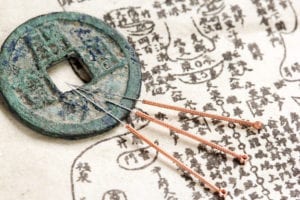As individuals, we all have some healing to do as we emerge from the pandemic. The same is true of organizations.
I’ve been reading Stuck?: Dealing With Organizational Trauma by Phillipe Bailleur, an organizational consultant who works with a living systems mindset. In Bailleur’s words, organizational trauma can’t be fixed, like a car going in for repair. Instead, as leaders, we need to learn how to heal our organization. Because humans and any other living systems organization can only be healed – not fixed.
Our organizations (and the people in them) have been adapting at an accelerated rate for more than 16 months. It doesn’t matter that some of the adaptations we’ve made were already ideas that existed before the pandemic. These preexisting ideas, like remote work environments, were present but still being met with resistance in many cases. The pandemic made that resistance obsolete, and our organizations had to adapt very quickly.
Even though an idea may be “familiar” rapid adaptation still created some form of trauma, mainly because the new routines were not part of our individual and organizational habits. And this new way of working from home rippled across other aspects of our lives, not the least of which was childcare as our kids were also forced to learn at home, and daycares were closed. Adapting to this new remote workstyle impacted many aspects of our lives, from how we showed up at work, to how we interacted with our teams. The fact that many of us had to wear so many different hats at once, particularly parents, created the need for even more sudden adaptations.
The impact of all this adaptation has to be described as trauma that happened to us as individuals and collectively to our organizations. The question now becomes – how do we begin our own healing?
Truncating our Regenerative Capacity
Just like nature, humans have a natural regenerative capacity. But sometimes we don’t nurture this capacity within ourselves. Instead of choosing to listen to our body and respond with an act or space that nourishes us, we outsource our healing to a doctor, a therapist, or perhaps a medication. This practice of seeking solutions elsewhere is sometimes necessary, but the choice doesn’t have to be our first response. My colleague Suzanne Koepplinger is the Executive Director of the Catalyst Initiative. The Catalyst Initiative is helping people understand that primary care is self-care! The Initiative focuses on integrated health and healing practices that are culturally specific and acts as an excellent resource for anyone interested in nurturing their own regenerative, healing capacity.
We need to remember when we don’t take care of ourselves, we cut ourselves off from integrated healing practices like yoga, meditation, acupuncture, Tai Chi, healing circles, and other activities that build our own resilience and strengthen our health. And that slows down our ability to regenerate.
Organizational Acupuncture
On an organizational level, we aren’t particularly good at healing either. Trauma from work experiences (including those caused by the pandemic) is real and occurring in our organizations every day. At a micro level, an action that breaks trust, for example when colleagues or leaders lie to us or when an expected reward is not forthcoming, is a source of trauma. A positional leader who becomes a toxic leader is another example of a trauma that may have far more reaching effects. Suddenly transforming a workplace into a remote or virtual organization causes trauma, even if the adaptation was expected or happening already in some fashion.
What would organizational acupuncture look like to you and your organization?
Johns Hopkins Medicine describes acupuncture as part of the ancient practice of Traditional Chinese medicine. Traditional Chinese medicine practitioners believe the human body has more than 2,000 acupuncture points connected by pathways or meridians. These pathways create an energy flow called Qi (pronounced “chee”) through the body that is responsible for overall health. Disruption of the energy flow can cause disease. By applying acupuncture to certain points, it is thought to improve the flow of Qi, thereby improving health.
A living organization also has energy flowing through it, and at times experiences a disruption or disturbance of the energy flow. When this occurs, organizational acupuncture becomes the practice of paying attention to disruption and trauma – instead of ignoring them the way we usually do. If as leaders we commit to noticing disturbances or trauma, we can help our organizations, teams, and individuals heal from trauma and regenerate more quickly. As a result, positive energy should return to the workplace much more rapidly.
We don’t usually track energy as a metric for the health of our organizations. Usually, we default to a profit margin or traditional bottom line to determine it’s health. But focusing on profit often means we tolerate behaviors that lead to dysfunction in the organization. Frankly, we don’t pay attention to what we don’t measure. And we need to measure the energy of our organizations if we are truly to lead with a living systems mindset.
I believe that people wake up each morning and decide if they are going to bring positive, negative, or neutral energy to their workplaces. Positive energy and energy flow help improve an individual’s health. The same is true for organizations because at the most basic level, what are they other than a collection of individuals?






